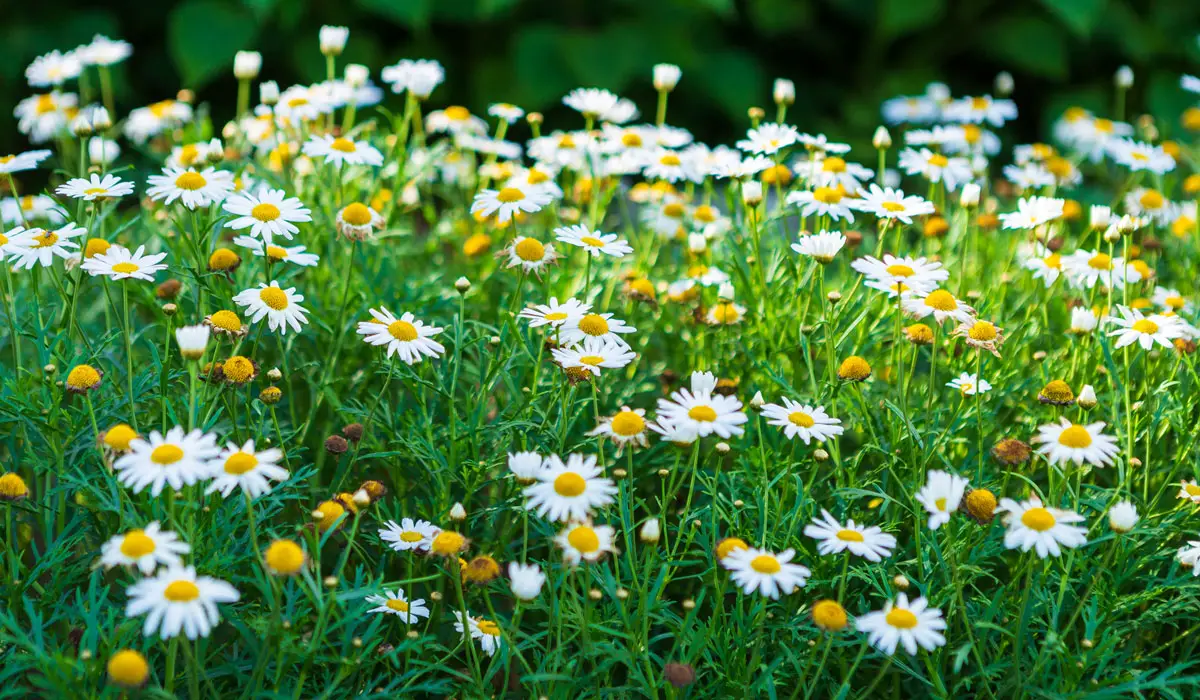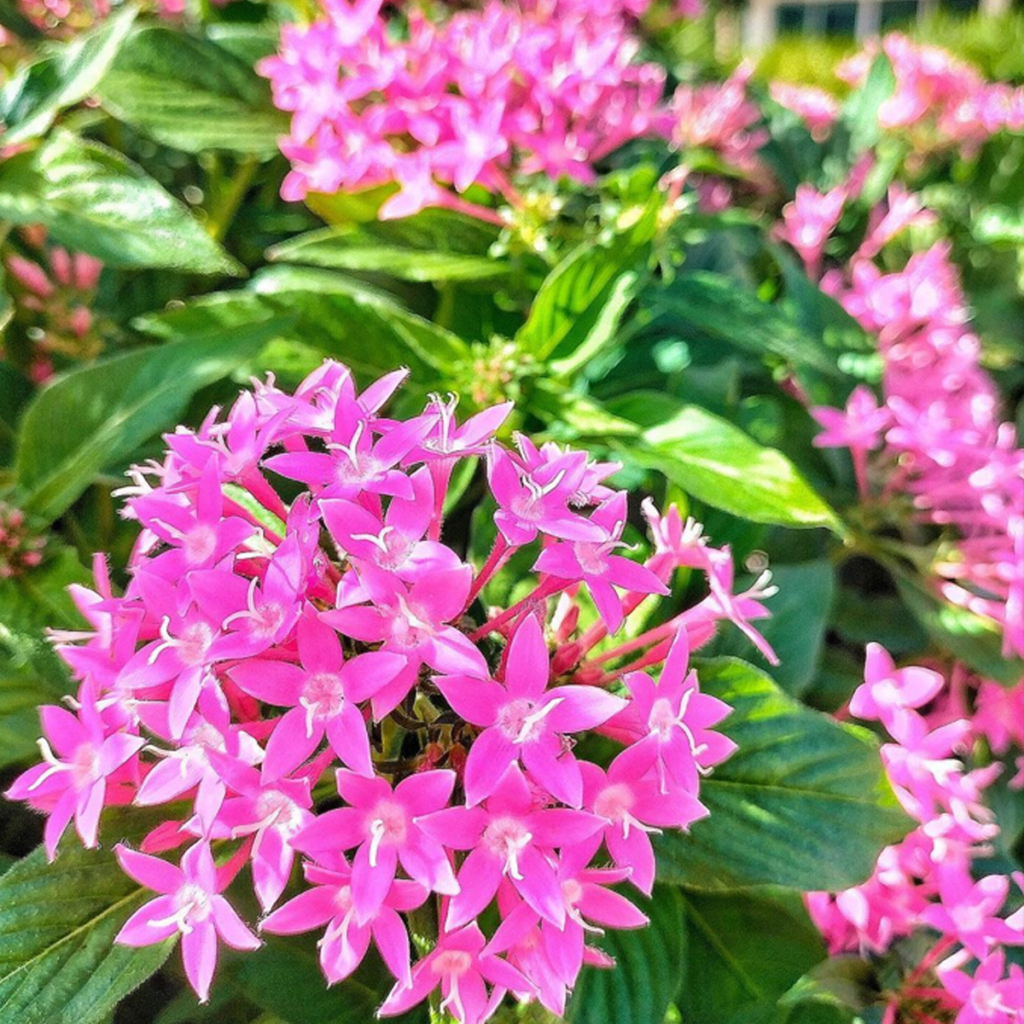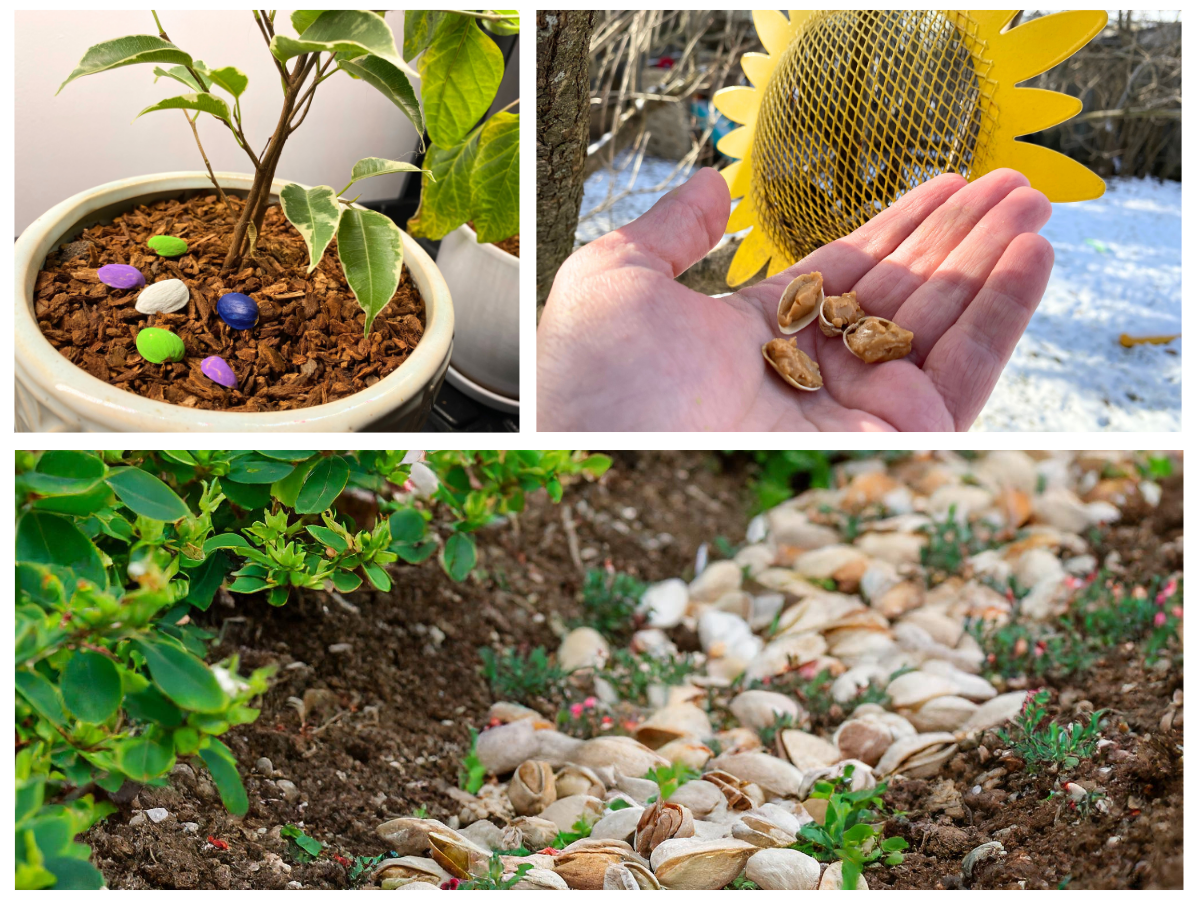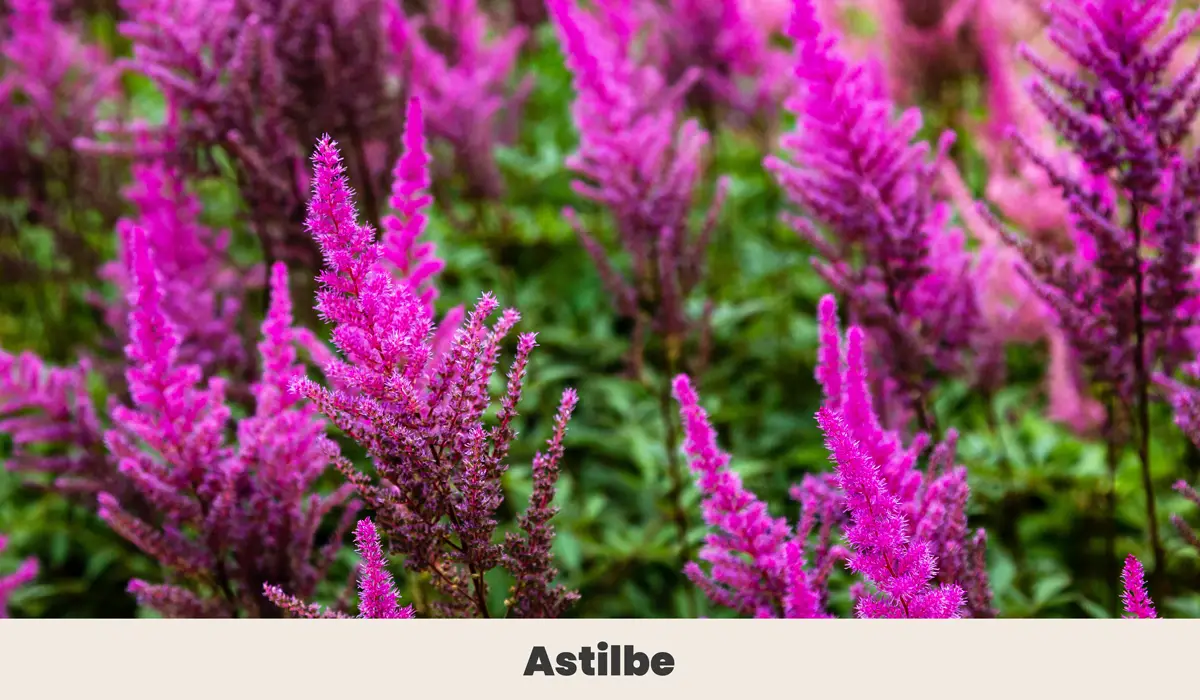11 Weeds With White Flowers + Pictures and Growing Guides

There’s just something about planting white flowers in your garden. They add brightness to your garden, even at night, and help create feelings of calm as soon as you pull up in your driveway.
Though weeds have long gotten a bad reputation for being invasive, many common lawn weeds with white petals are great for low-maintenance lawn care and attracting pollinators.

For example, weeds that produce flowers like the ones mentioned on this list can help fertilize the soil and work as mulch, which will benefit all the other plants you already have growing.
Whether you’re looking to learn more about the benefits of weeds with yellow flowers or white flowers, you’ve come to the right place.
Here is a list of the different types of flowering weeds and how to care for them:
1. Common Boneset (Eupatorium perfoliatum)

The Common Boneset plant will produce white flowers in the summer season. When in bloom, these flowers grow up to six feet tall and up to four feet wide.
The great thing about this white flowering weed is that it’s relatively disease-free. The only thing you risk is scorched leaves if the soil dries up. However, this is easy to combat with regular watering.
Here’s everything you need to know about this plant with the tiny white flowers that add beauty to your garden:
| Botanical Name: | Eupatorium perfoliatum |
| Growth Rate: | Up to 6′ tall and up to 4′ wide |
| Native Range: | United States |
| Hardiness Zones: | 3-8 |
| Dangers: | Toxic |
| Soil Needs: | Wet, well-draining, sandy soil |
| Exposure: | Partial shade or full sun |
| Ease of Care: | Low-maintenance |
| Diseases: | Not applicable |
| Propagation: | Divide the plant in spring or fall |
| Fertilizer: | Apply fertilizer in the spring |
| Pests: | Sawflies, moth caterpillars, weevils, and grasshoppers |
| Blooming Period: | Summer |
| Pruning: | Cut plant back in either late spring or early summer to encourage new growth |
| Water needs: | Water so the soil remains consistently wet |
2. Mayweed – German Chamomile (Matricaria)

Do you like daisies? Do you wish you could add more to your garden? If so, you may want to consider adding Mayweed.
This daisy weed produces white blooms with a bright yellow center. They add a touch of whimsy to any landscape!
A relatively low-maintenance plant, Mayweed is considered to be an invasive weed that flowers. It doesn’t require any fertilization to grow or spread.
If you’re looking to identify weeds with white flowers with yellow centers, look no further than Mayweed! Here’s what you need to know about these attractive white flowers:
| Botanical Name: | Matricaria |
| Growth Rate: | Up to 24″ tall |
| Native Range: | Asia and Europe |
| Hardiness Zones: | 2-8 |
| Dangers: | May be toxic to dogs |
| Soil Needs: | Well-draining soil |
| Exposure: | Full sun |
| Ease of Care: | Low-maintenance |
| Diseases: | Not applicable |
| Propagation: | Divide plant in the spring |
| Fertilizer: | Not required |
| Pests: | Aphids |
| Blooming Period: | Summer |
| Pruning: | Cut plant back after the flowers are done blooming |
| Water needs: | Water approx. every 9 days if it is not exposed to direct sunlight |
3. Wild Madder (Galium mollugo)

Keep in mind that Wild Madder prefers to be consistently moist. It does not do well if planted in a dry environment.
In regards to propagation, the Wild Madder plant doesn’t really need it as it can reproduce on its own. However, if you do wish to propagate, you can do so during the spring season or any time during its growing season.
Here’s a helpful care for taking care of this plant with small white flowers:
| Botanical Name: | Galium mollugo |
| Growth Rate: | Up to 4′ tall |
| Native Range: | Africa, Asia, and the Mediterranean |
| Hardiness Zones: | 5-9 |
| Dangers: | Toxic if ingested |
| Soil Needs: | Loose, well-draining soil that is rich in calcium |
| Exposure: | Light, partial shade to full sun |
| Ease of Care: | Low-maintenance |
| Diseases: | Not applicable |
| Propagation: | Divide plant in the spring |
| Fertilizer: | Fertilize during the summer |
| Pests: | Aphids |
| Blooming Period: | Summer |
| Pruning: | Not required |
| Water needs: | Water so the soil is wet |
4. Yarrow (Achillea millefolium)

This graceful, white wildflower makes its presence known with its large clusters of white flowers. This is a great plant to compliment the rest of your garden with.
This flower is also very low maintenance, since in the summer, you only need to water it once a month after the root system is established.
Here’s more info on how to take care of this plant with delicate white flowers:
| Botanical Name: | Achillea millefolium |
| Growth Rate: | Up to 3′ tall |
| Native Range: | North America, Europe, and Asia |
| Hardiness Zones: | 3-9 |
| Dangers: | Toxic |
| Soil Needs: | Well-draining soil |
| Exposure: | Full sun and partial sun |
| Ease of Care: | Low-maintenance |
| Diseases: | Root rot, leaf spots, and powdery mildew |
| Propagation: | Divide the plant in the spring |
| Fertilizer: | Fertilize in early spring |
| Pests: | Aphids, mealybugs, and thrips |
| Blooming Period: | Early spring to early fall |
| Pruning: | Cut the plant back in the fall |
| Water needs: | Water once a month during the summer |
5. Chickweed (Stellaria media)

Although this plant can be labeled as a weed, it features lovely white flowers that make it a welcome addition to any garden instead of the eyesore that most weeds are.
Best of all, this beautiful lawn plant can be seen all year round. Whether you’re growing winter perennials or summer perennials, here are some facts about chickweed you should know:
| Botanical Name: | stellaria media |
| Growth Rate: | Up to 12″ tall |
| Native Range: | Stellaria media |
| Hardiness Zones: | 4-11 |
| Dangers: | Toxic to fish |
| Soil Needs: | Moist soil that is high in nitrogen |
| Exposure: | Full or partial sun |
| Ease of Care: | Low-maintenance |
| Diseases: | Not applicable |
| Propagation: | Sow seeds any time of the year |
| Fertilizer: | Apply fertilizer once during the spring and summer months |
| Pests: | Lygus bugs and thrips |
| Blooming Period: | One to two months either during the spring or fall, depending on when this annual weed is planted |
| Pruning: | Cut the plant back once a week to keep it looking good; then switch to once every two weeks during periods of slow growth |
| Water needs: | Water once a week, then increase to 2-3 times a week as the weather gets warmer |
6. Queen Anne’s Lace – Wild Carrot (Daucus carota)

Believe it or not, this next entry is related to the same carrots you eat. While they might not be orange vegetables, they are part of the same family of plants.
These flowers look like baby’s breath in the fact that they have small white clusters. As such, these make beautiful cut flowers to add to your home. If you want a big white ball of flowers, fertilize every two or three weeks. This will yield the best results.
Here’s more information on how to grow Queen Anne’s Lace.
| Botanical Name: | Daucus carota |
| Growth Rate: | Up to 3′ tall |
| Native Range: | Europe and Asia |
| Hardiness Zones: | 3-9 |
| Dangers: | Parts of the plant can be toxic to humans and animals |
| Soil Needs: | Dry, nutrient-deficient soil |
| Exposure: | Full sun and partial sun |
| Ease of Care: | Low-maintenance |
| Diseases: | Not applicable |
| Propagation: | Sow seeds in the early fall |
| Fertilizer: | Apply a 10-10-10 fertilizer every 2-3 weeks until the flowers bloom |
| Pests: | Not applicable |
| Blooming Period: | Late summer |
| Pruning: | Prune before flowers bloom to encourage new growth |
| Water needs: | Once roots are established, it does not need to be watered |
7. White Clover (Trifolium repens)

Before you get rid of white clover, it’s best to consider the benefits.
As another gorgeous white flower, you can add to your garden, the white clover is a perennial that boasts round heads and lush green leaves.
It also has a little bit of pink on it. This plant not only attracts bees and butterflies but also provides good forage for livestock.
This beautiful plant needs to be kept moist but is otherwise fairly low-maintenance, so it’s an excellent option for beginners.
If you’re looking for more information on how to take care of this pink and white flower or learn more about other weeds with pink flowers, take a look at our chart below.
| Botanical Name: | Trifolium repens |
| Growth Rate: | Up to 6′ tall |
| Native Range: | Europe and Asia |
| Hardiness Zones: | 3-10 |
| Dangers: | A moist, well-draining soil |
| Soil Needs: | Moist, well-draining soil |
| Exposure: | Full to partial sun |
| Ease of Care: | Low-maintenance |
| Diseases: | Gray mold and clover rot |
| Propagation: | Divide the plant in either spring or summer |
| Fertilizer: | Apply fertilizer once in September |
| Pests: | Meadow spittlebug, potato leafhopper, and clover leaf weevil |
| Blooming Period: | Spring – fall |
| Pruning: | Prune the plant in the summer |
| Water needs: | Water daily until roots are established, then decrease to twice a week |
8. Wild Violet (Violaceae)

Do you already have weeds with purple flowers in your garden? Are you looking to add some white ones? If so, you may want to consider the Wild Violet.
While Violaceae refers to a family of plants that covers about 1,000 different species, for the sake of this list, I’ll be covering the Violaceae that you’re most likely familiar with: the Wild Violet.
The Wild Violet is a beautiful white and purple flower that’s easy to maintain and a great addition to anyone’s garden. Here’s some more info on how to take care of this plant.
| Botanical Name: | Violaceae |
| Growth Rate: | Up to 5″ tall |
| Native Range: | North America and Australia |
| Hardiness Zones: | 3-9 |
| Dangers: | Non-toxic |
| Soil Needs: | Moist, acidic soil |
| Exposure: | Full or partial sun |
| Ease of Care: | Low-maintenance |
| Diseases: | Centrospora leaf spot |
| Propagation: | Sow seeds in either the spring or summer, however propagation isn’t necessary |
| Fertilizer: | Apply fertilizer once at the beginning of spring |
| Pests: | Aphids |
| Blooming Period: | Sow seeds in either the spring or summer, however, propagation isn’t necessary |
| Pruning: | Prune either in the middle of summer or early fall |
| Water needs: | Water once a week and increase as needed during dry spells |
9. Fleabane (Erigeron glaucus)

Fleabane has daisy-like flowers that have white petals and bright, sunshine-colored centers. Since it’s a wildflower native to North America, it’s vital to the ecosystem, providing food and shelter for bugs and pollinators.
Best of all, Fleabane doesn’t really require a lot of upkeep. Water it once a week and you’re all set. Here’s how you can take care of this weed that will bloom in the summer and early fall:
| Botanical Name: | Erigeron glaucus |
| Growth Rate: | Up to 3.5′ tall |
| Native Range: | North America |
| Hardiness Zones: | 2-9 |
| Dangers: | Toxic |
| Soil Needs: | Dry, well-draining soil |
| Exposure: | Full sun |
| Ease of Care: | Low-maintenance |
| Diseases: | Powdery mildew, rust, and leaf spots |
| Propagation: | Divide your plant in early spring |
| Fertilizer: | Apply a 5-10-5 fertilizer in the spring |
| Pests: | Thrips |
| Blooming Period: | Summer to early fall |
| Pruning: | Cut your plant back to ground level during the fall |
| Water needs: | Water once a week |
10. Common Nettle (Urtica dioica)

Though the Common Nettle plant is easy to grow, you do have to put in a little work to keep it maintained, as it can rapidly spread across your lawn – and probably that of your neighbor’s.
This plant does best in full sun, as too much shade will make it grow too tall and out of control. When handling the Common Nettle, be sure to wear thick gardening gloves as the stalks could cause skin irritation.
Here’s what you need to know to take care of these flowers:
| Botanical Name: | Urtica dioica |
| Growth Rate: | Up to 8′ tall and up to 3′ wide |
| Native Range: | North Africa, Asia, and Europe |
| Hardiness Zones: | 4-10 |
| Dangers: | Toxic and can cause skin irritation |
| Soil Needs: | Moist, well-draining soil that is rich in nitrogen |
| Exposure: | Full sun |
| Ease of Care: | Low-maintenance to moderate |
| Diseases: | Not applicable |
| Propagation: | Divide in the spring |
| Fertilizer: | Not required, but a nitrogen-rich fertilizer can be applied if not exposed to the proper soil conditions |
| Pests: | Not applicable |
| Blooming Period: | Summer |
| Pruning: | Deadhead flowers to prevent spreading |
| Water needs: | Water so the soil is consistently soggy, but don’t water if exposed to constant rainfall |
11. Birdeye Pearlwort (Sagina procumbens)

Though Birdeye Pearlwort does have small white flowers, the body of it resembles moss, so it is actually a great ground cover if you’re looking for an alternative to grass.
Weeds like Birdeye Pearlwort are big self-seeders, so they don’t usually need propagation.
Furthermore, they tend to gravitate toward moist environments, including soil. Just remember that this weed grows best when exposed to a soil that is rich in organic matter, so add a little bit of compost around the base.
Here’s an overview of this perennial weed:
| Botanical Name: | Sagina procumbens |
| Growth Rate: | Up to 6″ tall |
| Native Range: | North America |
| Hardiness Zones: | Prune any time of the year |
| Dangers: | Toxic |
| Soil Needs: | Well-draining soil that is rich with organic matter |
| Exposure: | Full sun or light shade |
| Ease of Care: | Low-maintenance |
| Diseases: | Not applicable |
| Propagation: | Not needed |
| Fertilizer: | Not needed, but compost is recommended |
| Pests: | Fire ants |
| Blooming Period: | Spring – fall |
| Pruning: | Prune any time of year |
| Water needs: | Water when the soil has dried out |
Final Thoughts
Before you head over to Google to type in “weed killer” in the search bar, it may be a good idea to identify common weeds in your garden to see if they should stay.
Weeds like the ones on this list are often native wildflowers that attract pollinators. Even with little upkeep, these plants all add visual interest to your landscape.
Whether you want daisy-like white flowers or spiky white flowers, this list offers you the best options.




